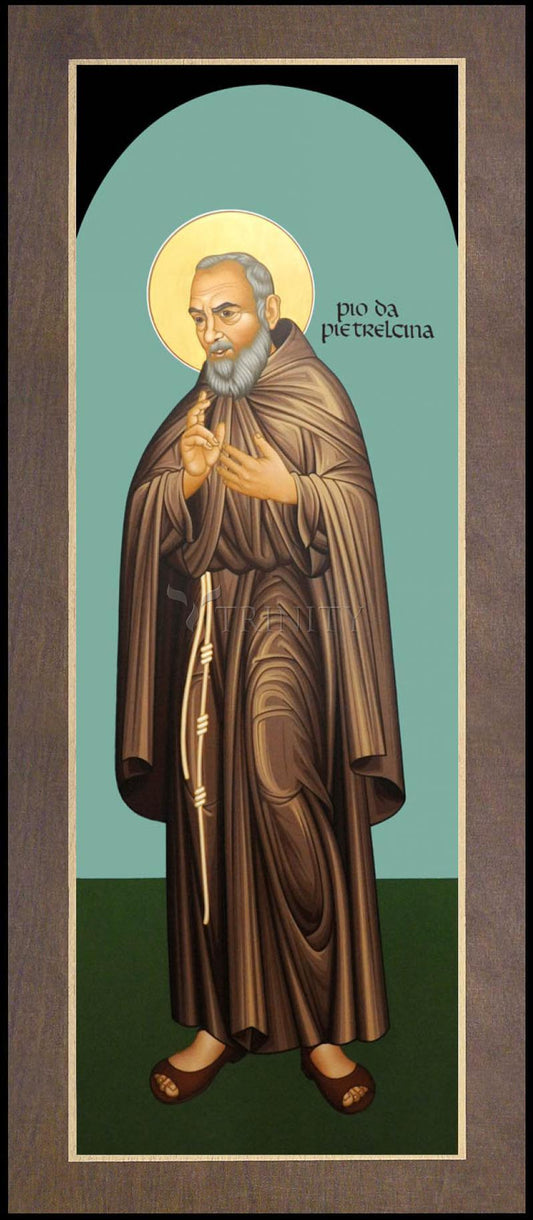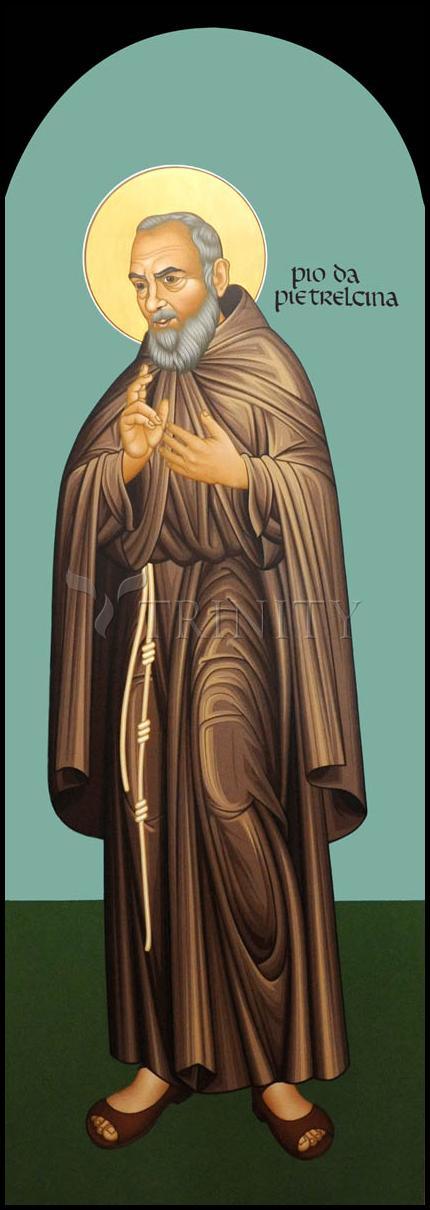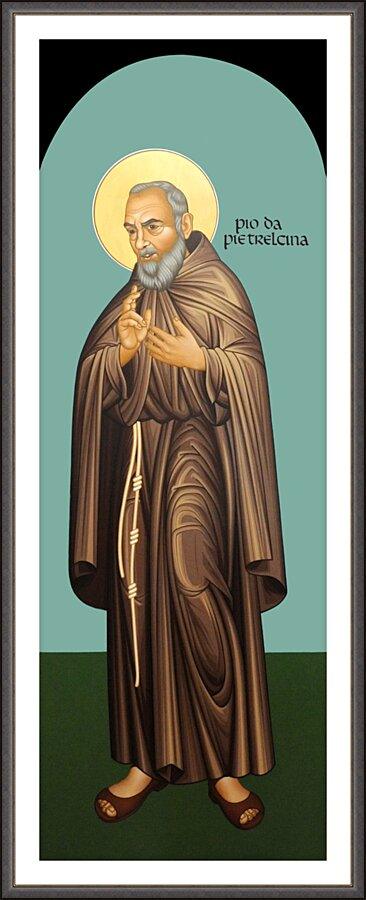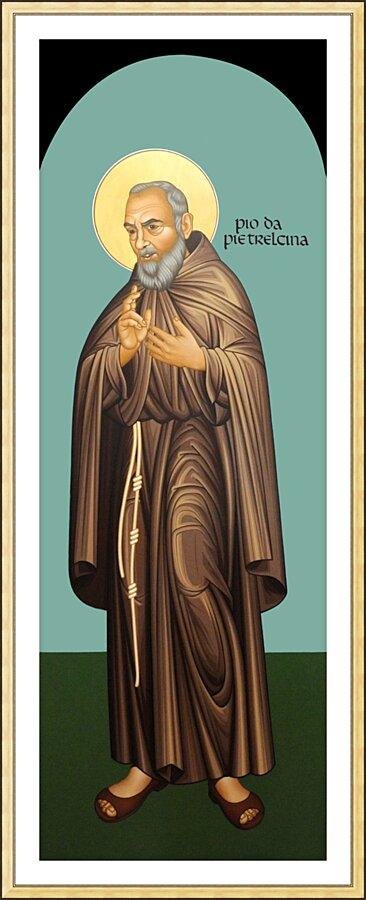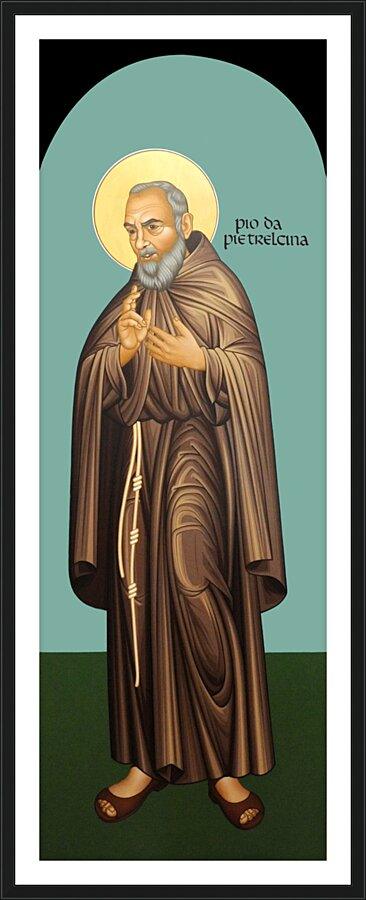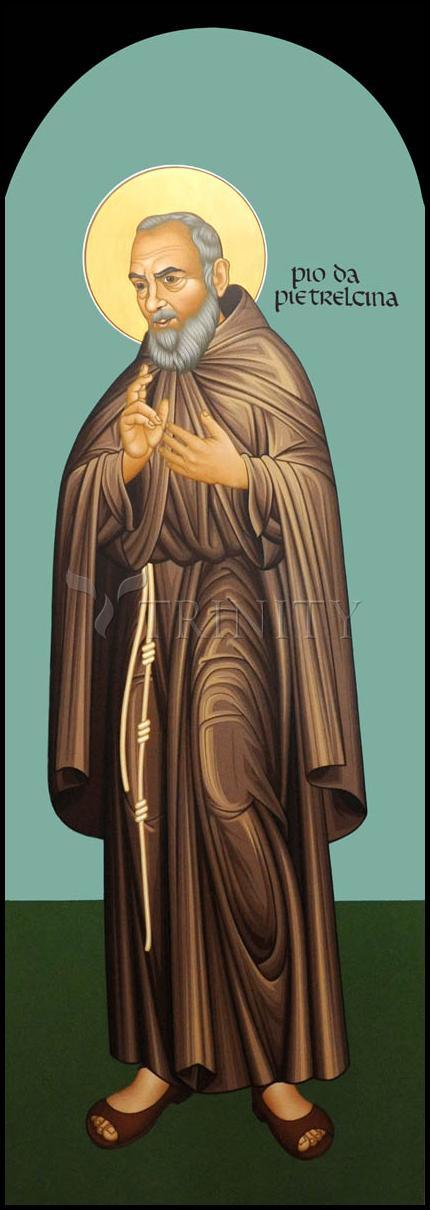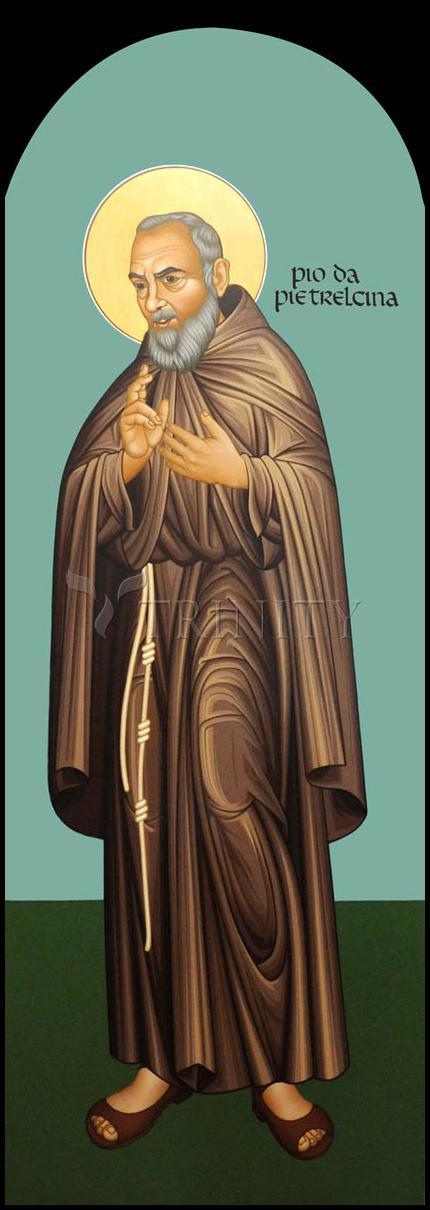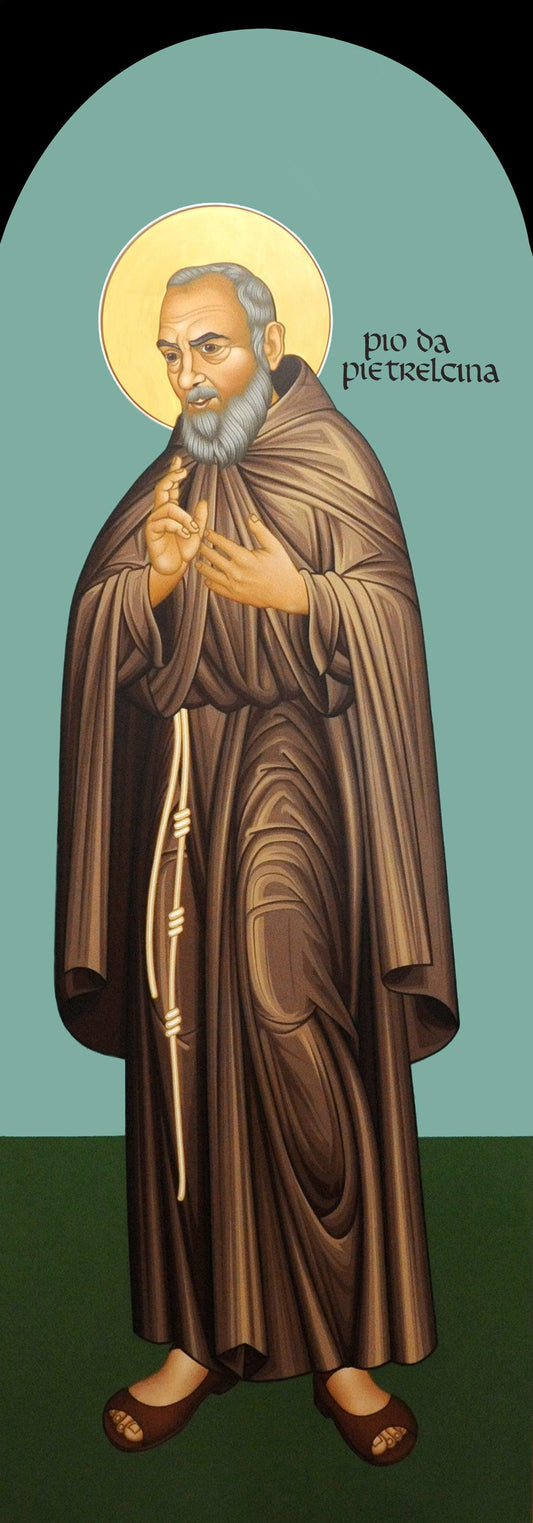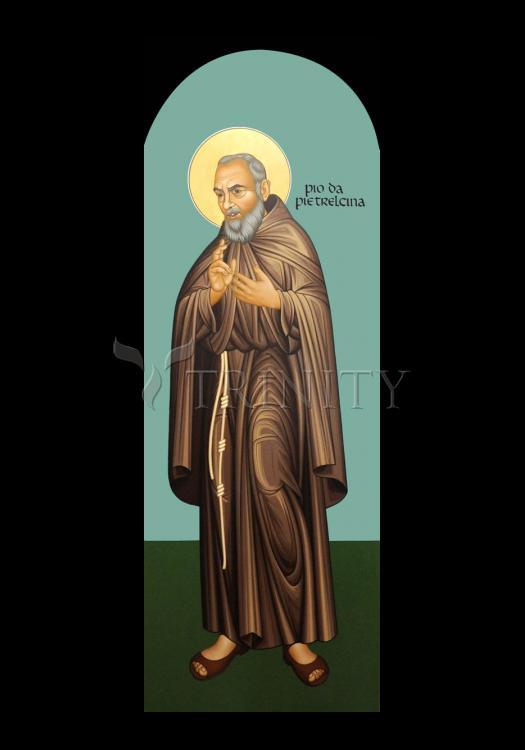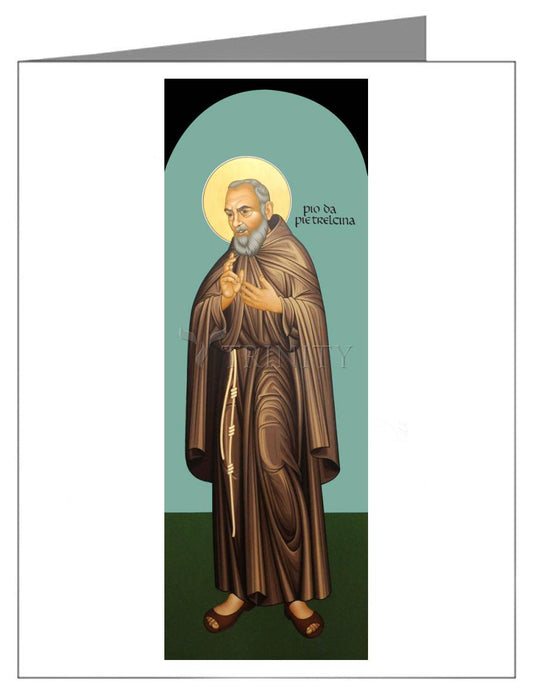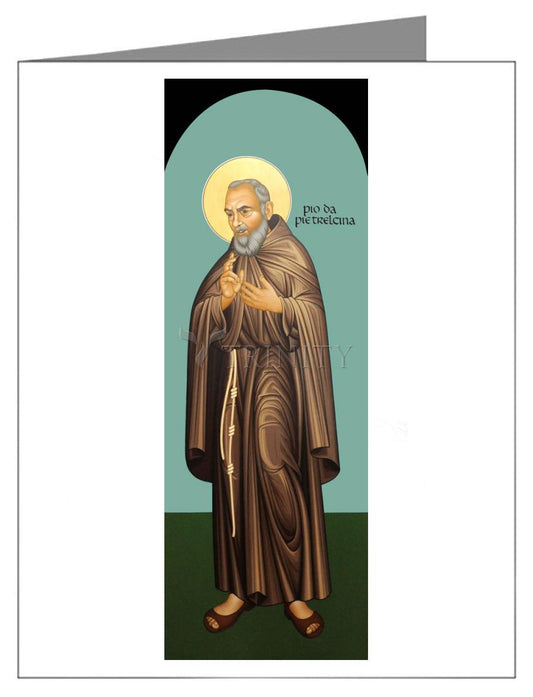One miracle that has been identified as Padre Pio's first miracle occurred in 1908. At that time he lived in the monastery of Montefusco. One day he gathered chestnuts growing in a nearby forest into a bag and sent the bag to Pietrelcina to his aunt Daria. She always had a great affection for him. The woman received and ate the chestnuts. She saved the bag as a souvenir. A few days later she was looking for something in a drawer where her husband usually kept the gun powder. It was in the evening so she used a candle to light up the room when suddenly the drawer caught on fire, and aunt Daria's face got burned. After a moment, she took the bag father Pio sent and put it on her face. Immediately, her pain disappeared and no wound or burn mark remained on her face.
During the Second World War, in Italy, bread was being rationed. Padre Pio's monastery always had a lot of guests and the poor who begged there for food. One day the Friars went to the refectory and realized that the basket only had about two pounds of bread. They prayed and sat down before starting to eat. Padre Pio went into the church, and a while later when he came back he was holding a pile of bread in his hands. The Superior asked Padre Pio: "Where did you get all these loaves of bread?" Padre Pio answered: "A pilgrim at the door gave them to me". Nobody commented, but everybody thought that only Padre Pio could meet such a pilgrim.
Once in the monastery of Padre Pio, a friar forgot to consecrate the Hosts for Holy Communion. There were only a few Hosts available. But after confessions when Padre Pio started to distribute Hosts to the people, many Hosts remained at the end of the service, more than had been consecrated before.
A spiritual daughter of Padre Pio was reading a letter from him on the side of a road. The wind blew the letter away, blowing it downhill to a meadow. The letter flew far, far away from the woman, and then suddenly it stopped flying and settled on a stone. In this way the woman got her letter back. The day after, she met Padre Pio who told her: "You have to pay attention to the wind next time. If I hadn't put my foot on the letter it would have flown far away into the valley".
Mrs. Cleonice, who was a spiritual daughter of Padre Pio, said: "During the Second World War my nephew was a prisoner. We had not received news for a year, and everybody believed he was dead. His parents were very worried about his life. His mother went one day to Padre Pio and knelt down in front of the friar who was in the confessional: "Please, tell me if my son is alive. I won't go away if you don't tell me!" Padre Pio sympathized with her, and FOTO15.jpg (4797 byte)some tears were on his face when he said: "Stand up and go in peace." Some days later, I couldn't resist the thought of pain that the parents were enduring, so I decided to ask Padre Pio for a miracle. I faithfully said: "Father I'm going to write a letter to my nephew Giovannino. I will write his name only on the envelope because we do not know where he is. You and your Guardian Angel will take the letter to him where he is." - Padre Pio didn't answer, so I wrote the letter. In the evening I put it on my bedside table before getting into bed. The morning after, to my great surprise, astonishment and fear, I found that the letter was not there anymore. I went in thanksgiving to Padre Pio and he told me: "Give your thanks to Our Lady." Almost fifteen days later our nephew sent us a response to the letter. Then everybody in our family was happy and giving thanks both to God and Padre Pio."
During the Second World War, Mrs. Luisa's son was an officer in the Royal British Navy. At that time she prayed every day for her son's conversion and salvation. One day an English pilgrim arrived to San Giovanni Rotondo, carrying some English newspapers. Luisa wanted to read them. She found a piece of news concerning the sinking of the warship on which her son was stationed. She immediately went crying to Padre Pio, who consoled her: "Who has told you that your son is dead?" In fact, Padre Pio was able to explain to her exactly the name and the address of the hotel where the young officer was staying after he escaped from the shipwreck in the Atlantic. He was there waiting for a new assignment again. Immediately Luisa sent him a letter, and after a couple of week she received an answer from her son.
A woman at San Giovanni Rotondo was such a good person that Padre Pio said it was impossible to find any fault in her soul to forgive. In other words, she lived to go to heaven. At the end of Lent, Paolina felt seriously ill. The doctors said there were no hopes for her. Her husband and her five children went to the convent to pray with Father Pio and ask him to help her. Two of the five children pulled Father Pio's habit and cried. Father Pio got upset, but he tried to console them and promised to pray for them, nothing else! Some days later, at the beginning of the Seventh hour, the sainted Padre's behavior changed. In fact, he asked for Paolina's healing and told everybody: "She will resuscitate on Easter Day." But on Good Friday Paolina lost consciousness as she fell into a coma. On Saturday, after some hours, Paolina finally died. Some of her relatives took her wedding dress in order to put it on her according to an old tradition of the country. Other relatives ran to the convent to ask Padre Pio for a miracle. He answered them: "She will be resuscitated" and he went to the altar for the Holy Mass. When Padre Pio started to sing the Gloria and the sound of the bells announced Christ's resurrection, Padre Pio's voice broke off with a sob and his eyes were full of tears. In the same moment, Paolina resuscitated. Without any help she got up from the bed, she knelt down and she prayed for the Creed three times. Then she stood up and smiled. She has recovered...or it should be better to say: "She has resuscitated." In fact padre Pio had not said, "she will recover" but "she will resuscitate." When she was asked what happened during the period when she was dead, she answered: "I went up, went up, went up; when I entered into a great light, I came back."
A woman said: "My first daughter, who was born in 1953, was rescued by Father Pio when she was eighteen months old. On the morning of January 6, 1955 my husband and I were in church attending the Holy Mass and our daughter was at home with her grandfather. There was an accident: she fell into a tub of boiling hot water. She was burned on her stomach and back. The doctor came in an hour and he said, "take your daughter to a hospital immediately because she could die from her wounds". For this reason he did not give us any medicine. After the doctor left I started to pray for Father Pio's help. It was nearly noon. As I was getting myself ready to go to the Hospital, my daughter who was alone in the bedroom called me: "Mommy, I don't have a wound anymore!" "Who has taken your wound?" I asked her out of curiosity. She answered: "Father Pio has come. He took my wounds by putting his whole hand on my burn". Actually there was no sign of burns on my daughter's body even though the doctor had told me my daughter was going to die.
The peasants of San Giovanni Rotondo fondly remember the following event. In spring, the almond trees were blossoming and they were promising a good harvest. But unfortunately millions of voracious caterpillars arrived and devoured the leaves and flowers. They did not spare even the shell. After two days of trying to stop that infestation, the peasants, for whom the almonds were the only economic resource - decided to speak to Father Pio about the problem. Father Pio looked at the trees from the window of the convent and decided to bless them. He put on the sacred vestments and started to pray. When he finished praying he took the holy water and made the sign of the Cross in the air, in the direction of the trees. The next day, the caterpillars had disappeared but the almond trees looked like sticks. It was a disaster: the harvest had been lost. What happened next is incredible! We had the most abundant harvest; a harvest like we had never seen before, but how is it possible that trees without flowers could produce fruits? How was it possible to have fruit from trees that looked like sticks? Scientists have never been able to give any reason for this phenomenon.
In the garden of the convent there were trees; cypresses, some fruit and some pine. Especially on summer afternoons, Father Pio used to stay in the shade together with his friends and guests in order to have a little relief from the hot weather. Once when Father Pio was speaking with some people a large number of birds suddenly started to chirp and make noise from the shade of the trees. The birds had composed a symphony. Father Pio became annoyed with the symphony so, looking at the birds he said: "Keep silent!" At which point, the birds, the crickets and the cicadas fell silent. The people who were in the garden were greatly astonished! In fact Father Pio had spoken to the birds like Saint Francis.
Born: May 25, 1887 at Pietrelcina, Benevento, Italy as Francesco Forgione
Died: September 23, 1968 of natural causes
Venerable: December 18, 1997 by Pope John Paul II
Beatified: May 2, 1999 by Pope John Paul II
Canonized: June 16, 2002 by Pope John Paul II at Rome, Italy



